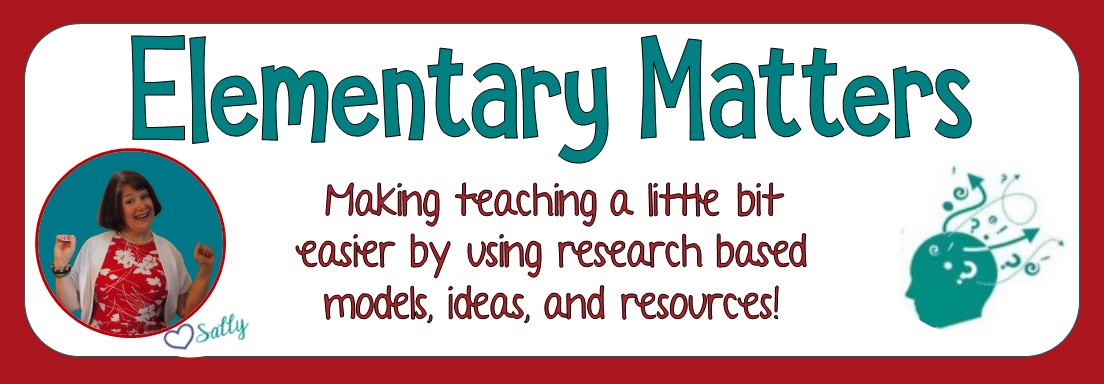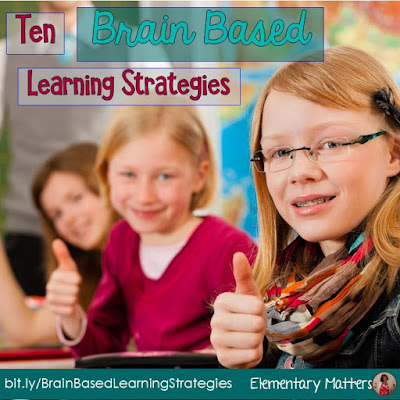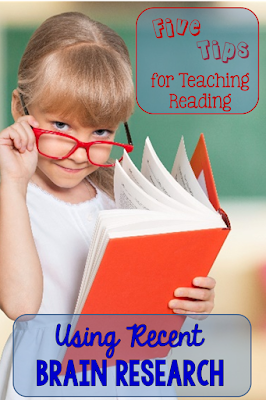If you have been reading my blog for a while, you know that I'm absolutely fascinated by the brain, and am particularly fascinated by the research that's been done to prove the best learning strategies.
There's some great stuff out there! I read about the brain and learning daily, and just can't get enough. I've taught a few workshops about it, too. Even though I'm a second grade teacher, this stuff applies to all learners, from newborn babies to adult learners.
There's some great stuff out there! I read about the brain and learning daily, and just can't get enough. I've taught a few workshops about it, too. Even though I'm a second grade teacher, this stuff applies to all learners, from newborn babies to adult learners.
1. Talking! Research has taught us that learners don't learn much from sitting and listening. Sure, they need to listen a bit, but they need the opportunity to talk! The talking internalizes what they've learned. In my classroom, I'll give the children a few tidbits of information, then they have "turn and talk" time, where they discuss what they've learned. They love this, and it works!
2. Emotions rule! If you think about the strong memories you have from your past, I'll bet they are closely related to strong emotional experiences, both positive or negative: your wedding, your child being born, a death... strong emotions. This works with children, too! Hopefully, your teaching won't bring out too many negative emotions, but there are ways to get to the positive ones! Kids love games. Some children are very competitive, and thrive on that stuff! Getting up in front of their classmates brings out plenty of emotions. Of course, different kids feel different things, so just be careful about playing with the emotions of children. What works for one might traumatize another. (Yikes, don't want to go there!)
3. Visuals! Vision is the strongest of the senses. Talking alone isn't enough. Make sure the children have plenty to look at in addition to what you say. Use posters, drawings, videos, pictures, and even some guided imagery with the children to help them learn.
4. Chunking! The typical attention span is the child's age plus or minus a couple of minutes. That means that many of my second graders can't attend past 5 minutes. Again, proof that typical "lecture" type teaching just doesn't work. That means they need a chunk of information, then an opportunity to process that in some way. Here's where "turn and talk" works, as well as an opportunity to write, draw, or even move.
5. Movement! Combining movement with the learning almost guarantees stronger learning. Here are some ideas: Counting by tens while doing jumping jacks, touch three desks while naming the three states of matter, and this one, from a blog post I wrote in the fall.
6. Shake it up! If you do exactly the same thing, exactly the same way, it becomes boring and the brain tunes out. Don't get me wrong, there are a lot of good things about sticking with a routine, but once in a while you need to shake it up! Have a backwards day, turning the whole schedule around (within reason, of course!) change the seating arrangement, do one part of the day completely different. We need this in our own lives, too, don't we?
7. The brain needs oxygen! They say 20% of all the oxygen used in the body is used by the brain. That means we need to get the kids up out of their seats regularly and moving! I particularly enjoy the Brain Gym exercises. I recommend the book, but there are also plenty of Youtube videos on brain gym that will model the exercises for you and tell how they help learning! Of course, there's nothing better than old fashioned jumping jacks or running in place. And the kids love it!
8. Make connections! We talk about connections in books a lot, but connections are important for the brain. It can't hold random information, it needs to connect to something else that's already there. Did you ever hear a kid say, "I remember that because I know...." You can make connections through your own experience and stories. I often talk about my daughter, my cat, or some other thing they know of to make something else come true.
9. Feedback is essential! Practice doesn't make anything better unless the practice is accurate. Students need to hear they are on the right track. I use a color code to let the children know if they are on track, which I described in this blog post from September. It works pretty well for motivation, as well.
10. Music is magical! Tell the truth, how many of you know all the words to a television commercial? People my age know all the words to the Gilligan's Island Theme Song and the Brady Bunch Theme Song. Did we work hard to learn those? Nope, never even tried! Because they were put to music, we learned them. There are many studies on music and learning. One way I use music is that I often play "happy music" first thing in the morning. That way the children enter feeling good. Now this brings us back to #2 emotions!












